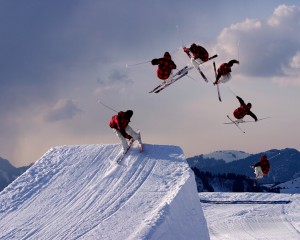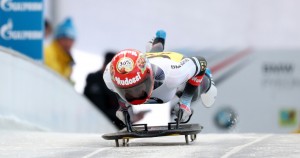The Pyeongchang Winter Olympics is officially underway, and athletes are competing for their chance to show the world what they’re made of.
Each athlete has worked hard over the last few months – even years – to calculate the risks and hopefully prevent any injuries from occurring. However, with more than 1 in 10 athletes getting injured in the last two Olympic games, it is sometimes unavoidable. Particularly if you are willing to fling yourself off a 300-foot-high ski jump or hurl yourself down a hill consisting of half-pipes, grind rails and jumps.
Not every winter Olympic event is extreme and dangerous though, with an unsurprising lack of dramatic injuries sustained in events such as the Curling and the Biathlon. However, if you love crashes, wipe-outs, near-misses and meltdowns, then we have listed the top sporting events for you!
Freestyle Skiing

Unsurprisingly, an event where athletes are flying through the air at high speeds whilst performing tricks is the most dangerous in the whole games. During the Freestyle events at the 2014 Sochi games, 49% of participants were injured in total. Freestyle skiing encompasses Slopestyle, Halfpipe, Ski Cross, Moguls and Aerial. Participants perform a variety of acrobatic style jumps and tricks while making their way down the slope. Slopestyle is the most recent of these events (debuting in 2014) and the most dangerous, with more than one in every three athletes getting injured, made even more difficult this year by the recent strong winds.
Bobsleigh

Teams and individuals, pack themselves into aerodynamic sledges and throw themselves down a long narrow track (on purpose!), reaching speeds of almost 80mph. The aim of the event is to avoid the sides of the track and finish with the fastest track time. Staying in control of the sledge is key when travelling at top speeds, as a situation can deteriorate very quickly. 20% of all Bobsleigh competitors were injured at the last two Olympic games, making it one of the most dangerous winter Olympic sports.
Skeleton

Banned from the winter Olympics in 1948 through to 2002, and with top speeds of almost 90mph, the Skeleton is one of the oldest Olympic events. It consists of an athlete lying head first on a small sledge and whizzing down a curved iced track, which certainly looks terrifying if nothing else. Like the bobsleigh, the speed increases the severity of any crashes that may occur, which has historically involved many near-fatal collisions, hence the ban.
Ice Hockey

One of the most popular events at the winter Olympics is the high-impact adrenaline fuelled game of Ice Hockey. Not only is it a high impact game during play, but tensions often run high between rival teams. Making it the most dangerous team sport, with 20% of athletes sustaining injuries in 2010 Vancouver Olympics. Their high-speed collisions are equivalent to that of a 30mph car crash, most common injuries consist of head, Shoulder and Elbow Injuries as they continuously tackle and barge each other throughout the game.
We’re not for a second suggesting you would watch sport to see getting people picking up injuries, but the fact is, the most thrilling sports often make for the best spectacles. The most injury-prone Winter Olympic events are anything involving speed, potential collisions, snowboards, skis or skates. So, if you like living precariously through athletes on TV, from the comfort of your sofa, then get your popcorn ready!
If you do decide to take to the slopes yourself – we can help with your preparation and with your rehab if you are unfortunate enough to pick up an injury.
